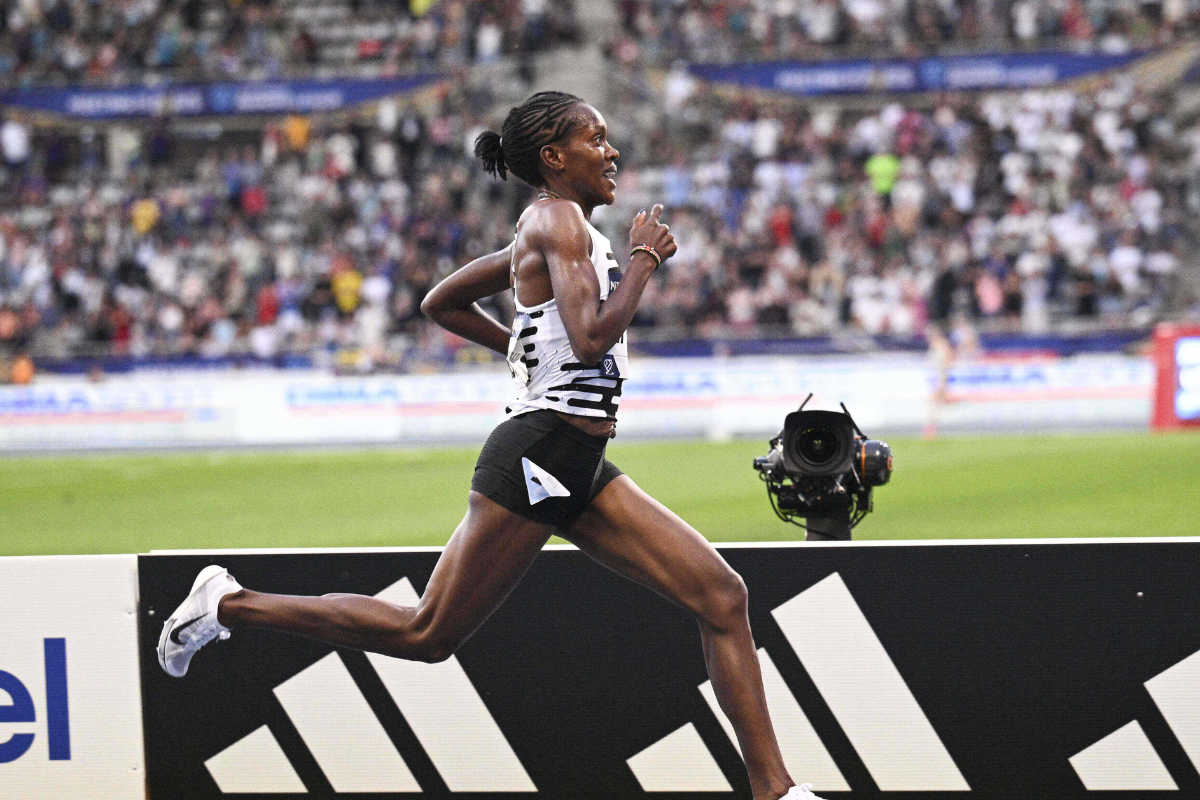
Imago
Credits: IMAGO

Imago
Credits: IMAGO
If there’s one thing that Jamaica and Kenya share, then it’s their dominance on the track. Both nations have produced world-class sprinters, yet preparing athletes to their full potential remains a struggle. “My preparations have been challenging,” confessed World Champion Faith Kipyegon, reflecting on training in her own country ahead of the World Athletics Championships. Despite the hurdles, she clinched a medal in Tokyo. But the challenges persist, and at the Athlos event, when asked the same question, Kipyegon didn’t hold back, raising the issue once more, hoping her sports administrators are listening.
Watch What’s Trending Now!
During a media interaction with Faith Kipyegon, Georgia Hunter-Bell, and Keely Hodgkinson, a reporter from Jamaica posed a thought-provoking question. He noted that both Jamaica and Kenya share a wealth of talent but often lack world-class training facilities. Faith responded, “Oh, yeah. It’s really difficult, but we normally try to use what is possible and just make use of it. Because in Africa, we don’t have, you know, the best facilities to train, like tracks and everything. When I was preparing for SAFOR, I was just using my ramp track to prepare for that breaking point.”
She further added, “So it was really tough. But I normally ask our government to do, you know, something about the facilities—especially training tracks and stadiums. Because, you know, we are also bidding for the 2029 World Championship in Kenya, and that will be tough if we don’t have good facilities. So we hope they will make some corrections, and we will have a good European.”
ADVERTISEMENT
Time and again, Kenya’s elite athletes have voiced their frustration over the nation’s subpar training facilities, warning that the lack of proper infrastructure continues to cripple both their preparation and global performance. Sharing her struggle, Faith Kipyegon expressed disappointment that authorities rarely act on athletes’ concerns. Back in July, she echoed the same sentiment, saying, “My preparations have been challenging, particularly regarding training locations. When I was training to become the first woman to run a sub-four-minute mile, I went through a lot.”
Kenya’s stellar 11-medal haul at the World Athletics Championships, finishing just behind the USA, has reignited national pride and underscored the need to invest in the country’s sporting future. Well, Faith Kipyegon is not the only one who has raised the issue before the Kenyan administration.
ADVERTISEMENT
Kenya’s top coach raises concerns for the national team after the World Athletics Championship
“We endure a lot in training, and as Kipyegon experienced, the facilities aren’t always up to standard. We are not asking for much, just adequate training facilities.” These were the words of Beatrice Chebet when asked about Kenya’s training conditions. Despite massive funds being allocated to sports, the reality on the ground tells a different story. At the World Athletics Championships, Kenya bagged 7 golds, 2 silvers, and 2 bronzes, finishing just behind the U.S. Notably, most of these medals came from the women’s team, sparking serious concern over the men’s declining performance.
Kenya’s head coach, Julius Kirwa, has unveiled Athletics Kenya’s bold plan to shield young male athletes from the relentless pull of road races. “The performance of male athletes is really hitting us as a federation. Our athletes are going on the roads at very young ages of 10 to 20 years, which they are not supposed to do,” said the coach. Kirwa revealed that the coaches are now working with the federation to make sure the young talent of the country doesn’t deviate from the track.
ADVERTISEMENT
“We have told the federation there’s no need for a young athlete to go straight into a 21km race.” Kirwa further expressed, “Once you hit the roads, it’s almost impossible to return to the track. The tarmac is not the same.” It appears that the Kenya Sports Federation is taking a serious look into the problem. Whether it’s the women’s team or the men’s team, they are determined to find a complete and lasting solution.
ADVERTISEMENT
ADVERTISEMENT
ADVERTISEMENT

